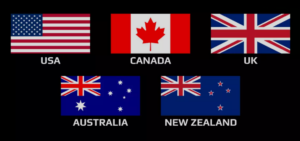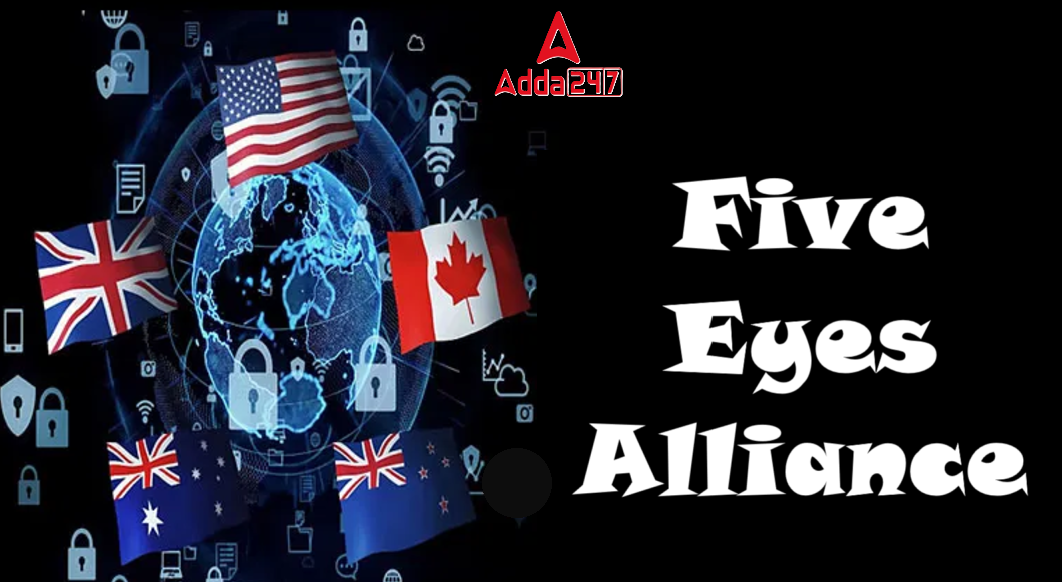Table of Contents
In 1946, the US, UK, Australia, Canada, and New Zealand formed the Five Eyes alliance, creating a network for surveillance and intelligence-sharing through bilateral agreements. While often referred to as the UKUSA agreement, the alliance’s details are secret and complex. Each member intercepts, collects, analyzes, and shares intelligence with the others.
Over time, the alliance expanded:
9 Eyes: The Five Eyes plus Denmark, France, the Netherlands, and Norway.
14 Eyes: The 9 Eyes plus Germany, Belgium, Italy, Spain, and Sweden.
41 Eyes: Including the above, plus allied countries in Afghanistan.
Tier B countries: Nations with focused cooperation on cyber activities, like Japan, South Korea, and Turkey.
What is the Five Eyes Alliance?
The Five Eyes Alliance (FVEY) is a network of five English-speaking countries the United States, the United Kingdom, Canada, Australia, and New Zealand that shares intelligence and monitors global communications. It began in 1946 with the UKUSA Agreement and became widely known in 2013 after Edward Snowden revealed details of its activities.
FVEY uses methods like signals intelligence (SIGINT) to track communications such as phone calls, emails, and messages through satellites, phone networks, and fiber optic cables. The alliance also collects data from major tech companies like Google, Facebook, and Apple. By monitoring each other’s citizens, FVEY avoids domestic surveillance laws and has grown into a global surveillance network.
Formation and History of the Five Eyes
Five eyes Alliance originated from the 1941 Atlantic Charter, which outlined post-WWII goals for the Allies. In 1943, the U.S. and U.K. signed a secret intelligence agreement, the BRUSA Agreement, later formalized as the UKUSA Agreement. Over the years, countries like Canada, Norway, and Denmark joined as temporary members, but by 1955, FVEY was limited to the current five: the U.S., U.K., Canada, Australia, and New Zealand.
During the Cold War, Five Eyes Alliance monitored Soviet, Chinese, and Eastern Bloc communications. Its intelligence supported various conflicts, including the Vietnam War, the Falklands War, and the Gulf War, as well as political events like the overthrow of Iran’s Prime Minister and the Chilean coup.
In 2013, Edward Snowden’s leak revealed details about the Five Eyes Alliance , sparking controversy over online privacy and surveillance. The public was shocked by the extent of data collection, leading to privacy concerns. In response, the U.K. passed the Investigatory Powers Act in 2016, expanding surveillance powers, but faced backlash and legal challenges, resulting in amendments by 2018.
Why is it Called Five Eyes?
The term “Five Eyes” refers to the exclusive intelligence shared among the five member countries. Here’s a timeline of key events in the history of the Five Eyes Alliance:
- 1941: The U.S. and U.K. start intelligence cooperation through the Atlantic Charter during WWII.
- 1946: The UKUSA Agreement (BRUSA) is signed, formalizing intelligence sharing.
- 1948: Canada joins the alliance.
- 1956: Australia and New Zealand become members.
- 1973: Australian PM Gough Whitlam discovers the BRUSA/UKUSA Agreement.
- 1999: The alliance is officially named “Five Eyes.”
- 2010: The full text of the agreement is released to the public after over 60 years.
Countries in the Five Eyes Alliance
The Five Eyes Countries are mentioned below. These nations collaborate closely, pooling intelligence resources and sharing classified information to ensure collective security.

- United States
- United Kingdom
- Canada
- Australia
- New Zealand
How Does the Five Eyes Intelligence Network Operate?
The Five Eyes Intelligence Alliance uses a vast network of surveillance systems, satellites, and cyber tools to operate globally. Key components include:
- Signals Intelligence (SIGINT): Sharing intercepted communications and signals.
- Surveillance Systems: Using advanced technology for worldwide monitoring.
- Division of Tasks: Each country focuses on specific regions or types of intelligence.
- Joint Operations: Coordinating missions to address global threats.
- Cybersecurity: Collaborating on defense against hacking and cyber-espionage.
- Each country contributes its local knowledge, forming a global security network. The Five Eyes Intelligence Oversight and Review
- Council (FIORC) was created in 2016 to ensure oversight and cooperation.
Headquarters of the Five Eyes Alliance
The Five Eyes Alliance does not have a central headquarters; instead, its activities are managed by the national intelligence agencies of each member country:
- United States: National Security Agency (NSA)
- United Kingdom: Government Communications Headquarters (GCHQ)
- Canada: Communications Security Establishment (CSE)
- Australia: Australian Signals Directorate (ASD)
- New Zealand: Government Communications Security Bureau (GCSB)
Five Eyes and Privacy Rights
Since the Snowden leak, the Five Eyes Alliance has faced public backlash, with many seeing its actions as violations of human rights. Before the leak, it was believed that the alliance only targeted foreign countries. However, Snowden’s documents revealed that the Five Eyes were collecting and storing electronic communications from their own citizens and even monitoring each other’s citizens to bypass domestic spying laws. This surveillance program was known as Echelon.
Other Related Intelligence Alliances
The Five Eyes countries have built long-term partnerships, sharing intelligence and agreeing not to spy on each other. In addition to the Alliance, some third-party countries have separate agreements with Five Eyes nations for specific interests, but they do not have the same intelligence privileges as FVEY members
Other intelligence alliances include:
Five Eyes Plus Three (Against China and Russia): The Five Eyes countries plus France, Germany, and Japan, formed in 2018 to counter common threats from Russia and China.
Five Eyes Plus Three (Against North Korea): The Five Eyes countries plus France, Japan, and South Korea, focused on sharing intelligence about North Korean military activities.
Nine Eyes: The Five Eyes countries plus Denmark, France, the Netherlands, and Norway.
Fourteen Eyes: The Nine Eyes countries plus Germany, Belgium, Italy, Spain, and Sweden, also known as SIGINT Seniors Europe (SSEUR).
Recent News on the Five Eyes Alliance
The Five Eyes alliance held its first intelligence meeting in Japan on Wednesday, marking the first time the group has met outside a member country. This reflects Japan’s growing role in intelligence gathering, especially regarding China, according to Nikkei Asia.
- Chinese experts warn that Japan may feel like an outsider in the Five Eyes due to cultural and ethnic differences with current members.
- Japan aims to boost its influence by aligning more with the Five Eyes in military, security, and politics, but its potential membership depends on negotiations.
- The meeting in Japan shows Tokyo’s growing role as an intelligence hub in the Indo-Pacific, highlighting its increasing global security importance.
- Experts caution that Japan’s closer ties with the Five Eyes could clash with its wider interests, especially with China’s rising influence, leading to regional instability.



 TSPSC Group 1 Question Paper 2024, Downl...
TSPSC Group 1 Question Paper 2024, Downl...
 TSPSC Group 1 Answer key 2024 Out, Downl...
TSPSC Group 1 Answer key 2024 Out, Downl...
 UPSC Prelims 2024 Question Paper, Downlo...
UPSC Prelims 2024 Question Paper, Downlo...
